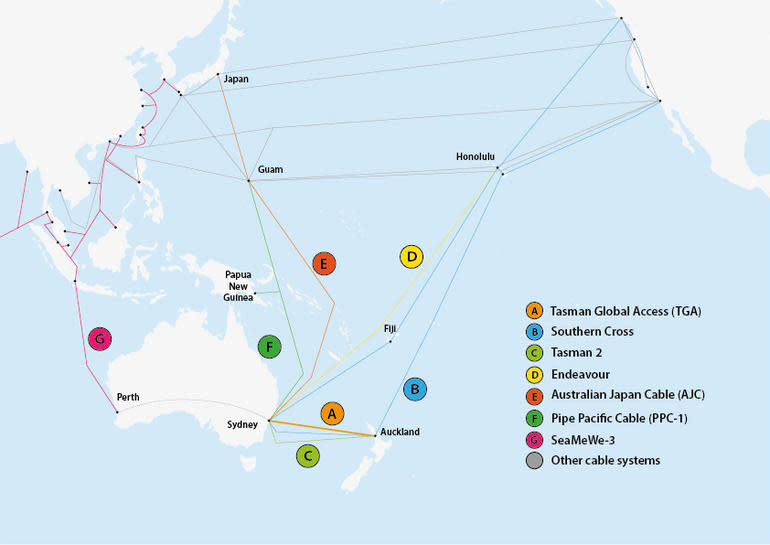Consortium to lay new trans-Tasman cable in 2015
Spark New Zealand, Vodafone and Telstra will invest approximately US$70 million on the new cable crossing the Tasman sea.
The 2,300km Tasman Global Access (TGA) cable will land in New Zealand at Raglan, south of Auckland, and at Telstra's Oxford Falls landing station in Sydney.
The project, which the partners said will significantly improve New Zealand's international broadband connectivity and resilience. will commence in early 2015 and carry traffic by mid 2016.
Spark and Vodafone will contribute the lion's share of the capital at US$32 million each, with Telstra contributing the balance. That implies a rough shareholding of 45 per cent each for the major partners and 10 percent for Telstra.
Alcatel-Lucent will lay the TGA cable of two fibre pairs with total capacity of 20 Tb/s.
Spark also owns 50 percent of the existing Southern Cross Cable with Singtel Optus (40 percent) and Verizon (10 percent).
Meanwhile, a final decision is expected by the end of the year from Hawaiki Cable on whether it will proceed with plans for a new trans-Pacific cable including a trans-Tasman link.

Tasman and Pacific cable systems
Spark's and Vodafone's trans-Tasman internet traffic have grown from just 10 percent of total international traffic in 2000 to 40 percent today, the telcos said. Conversely, trans-Pacific traffic has declined from 90 percent of all traffic in 2000 to 60 percent today.
"With New Zealand's international capacity requirements growing 60 percent year-on-year, the TGA Cable will support the future needs of consumers and the growth aspirations of New Zealand businesses," the companies said in a statement.
Spark New Zealand managing director Simon Moutter and Vodafone chief executive Russell Stanners, on behalf of the consortium, said the partnership was a great outcome for New Zealand.
"As well as strengthened links into fast-growing Asian markets, the TGA Cable will enable New Zealand to better leverage the five main international cable systems currently serving Australia, and deliver important redundancy for New Zealand," they said.


